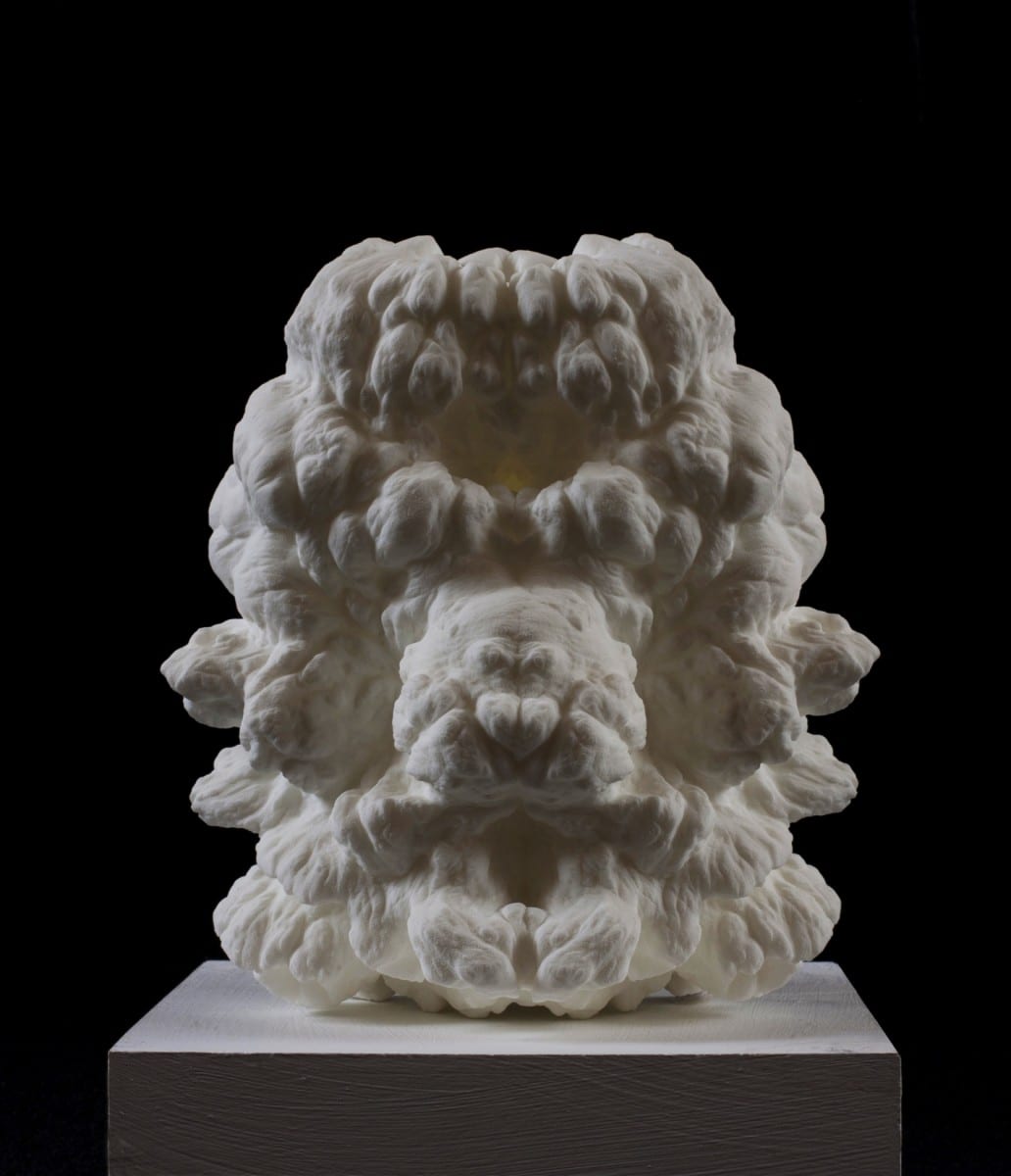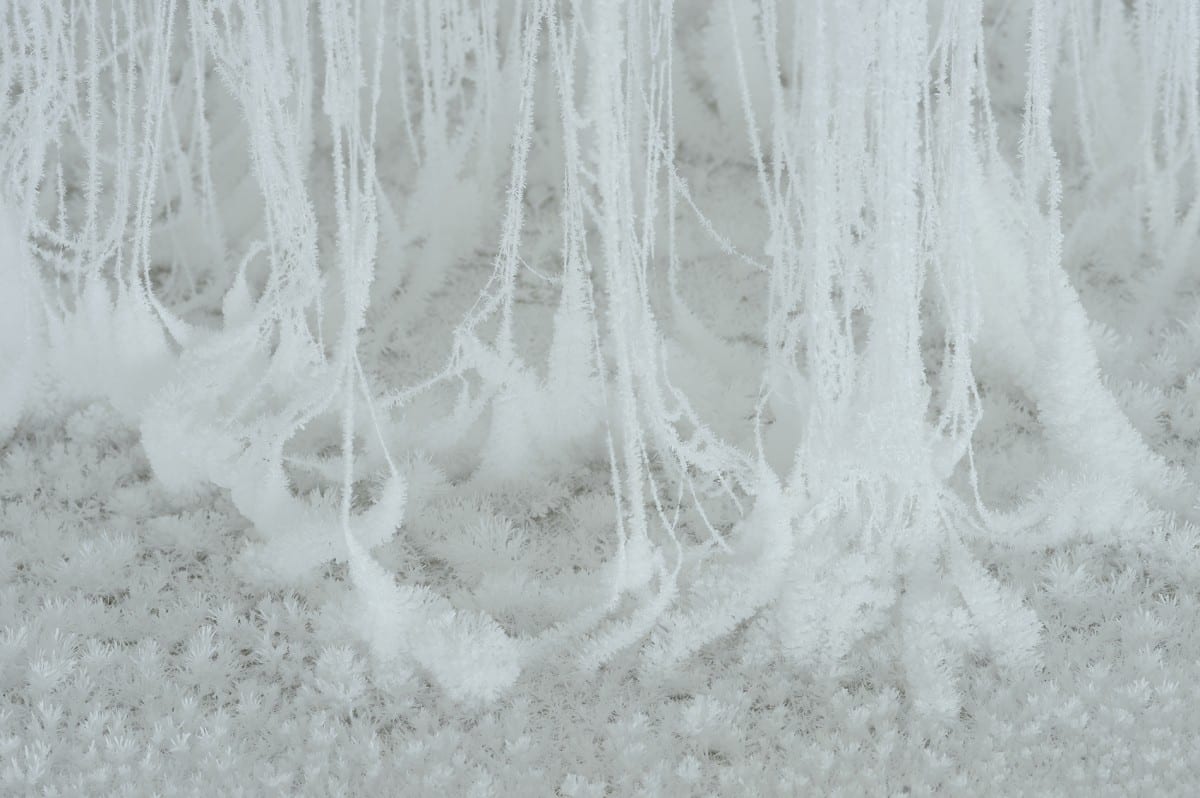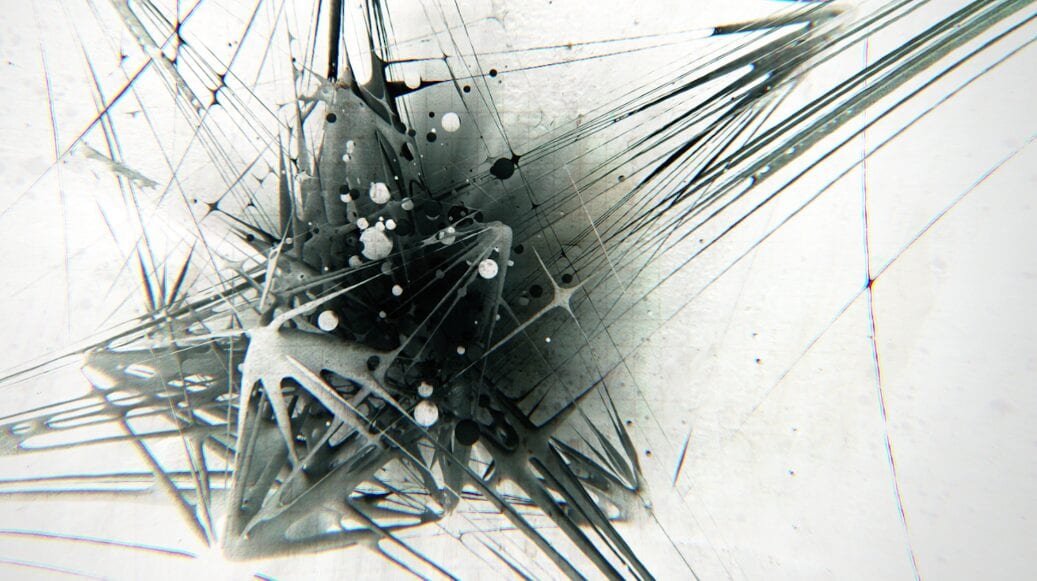Issue 04 / Miller Updegraff: Before the Image Fades
There are several raw canvases that have been stretched by hand, drying on the lawn in the mid afternoon sun. Several overturned, empty white gallon buckets support either side. A makeshift assembly line that would only be possible in Southern California. Seated outside of his converted garage studio, Miller Updegraff wrings his hands, stained from the knuckle down with a dark blue ink. The studio was sparse when we visited because a majority of the work had been shown at Art Los Angeles Contemporary, which is where Installation encountered the artist’s work for the first time. Like an image bleeds into the tissue of memory, Updegraff’s paintings employ the effect of an aging photograph that allows us to look back before the image fades.

Issue 06 / SCI-Arc: Looking Back, Looking Ahead
SCI-Arc, the Southern California Institute of Architecture, turns 40 this month, celebrating April 19 and 20th. Located within a quarter-mile long former freight depot in the heart of the artist’s district of Los Angeles, the school has played an integral role in fostering architectural experimentation and invigorates the shape of Los Angeles. The institute began in a Santa Monica warehouse in 1972 offering solace to a small group of students and faculty who rejected the stale institutional models of other universities. The small community grew with a dialogue that would create, explore and test the limits of architecture. SCI-Arc is devoted to innovation, and encourages their students to examine their environment from a mindful cultural, philosophical, and theoretical lens while applying new applications and materials. The strongest reflection of any university is their alumni and the past four decades of SCI-Arc graduates are nothing less than extraordinary.

Issue 08 / Rob Tarbell: Smoke Screen
What began as a way to purge himself of artifacts of capitalism like credit cards and memberships, transformed into an unexpected journey taming smoke. Rob Tarbell describes his process of manipulating smoke, and making the unpredictability of fire become a lucid gesture that captures his wildest visions.

Issue 09 / Chad Wys: Presence/ Absence
Multi-disciplinary artist Chad Wys interrogates the infrastructure of art history. In appropriating the canon, Wys uses contemporary digital technology to intervene, and to siphon back through the history of art in order to extract kernels of information and misinformation. His practice is one of both revelation and obfuscation but leaves the meaning to be made by the viewer.

Issue 15 / Gabriel de la Mora: Lost in the Method
Hair, eggshells, and Post-its transform once they enter Gabriel de la Mora’s laboratory. Equipped with unique tools, the craftsman transmutes discarded materials into detailed works of art driven by process and investigation. As he expresses, “My definition of art is parallel with the definition of energy, stated as: Art is not created or destroyed, it is only transformed.”
Issue 17 Beeple: The Digital Auteur
Meet Beeple. The mastermind behind Installation’s latest editorial title cards. A craftsman of the digital design world, Beeple takes us inside the methodology that informs his creative practice. The art of Beeple is the transformation of culled discoveries from Behance, FFFFound, Pinterest, Tumblr and music inspired by Spotify, paired with a stylistic use of animation and graphic design programs. The trademark of the artist’s style is that one never feels that they are experiencing a manufactured experience from Cinema4D, After Effects, Photoshop and Illustrator, rather are immersed into a textural and visceral viewing experience, imprinted with the unmistakable hand of the artist.

Issue 22 / Mat Chivers: Conflicting Notions of Fact and Fiction
As part of an ongoing series of works on paper collectively entitled Perceptual Ecology, Mat Chivers has been making drawings that result from the mirroring and combination of self-made and found photographic images, film and CAD renderings. A seasoned participant of the Venice Biennale, Chivers develops an intricate narrative and intriguing process to create complex and compelling works of art.

Issue 34 / Onishi Yasuaki: Vertical Emptiness and White Landscape
Japanese artist Onishi Yasuaki creates immersive environments that transform elements of the natural world into artifacts of a dreamscape. His installations are created using tree branches or wire, hot glue and urea. While his installations are neutral they are colored with imagination. These large spaces are activated by participants who are displaced from reality and take a journey into an alternative world.


